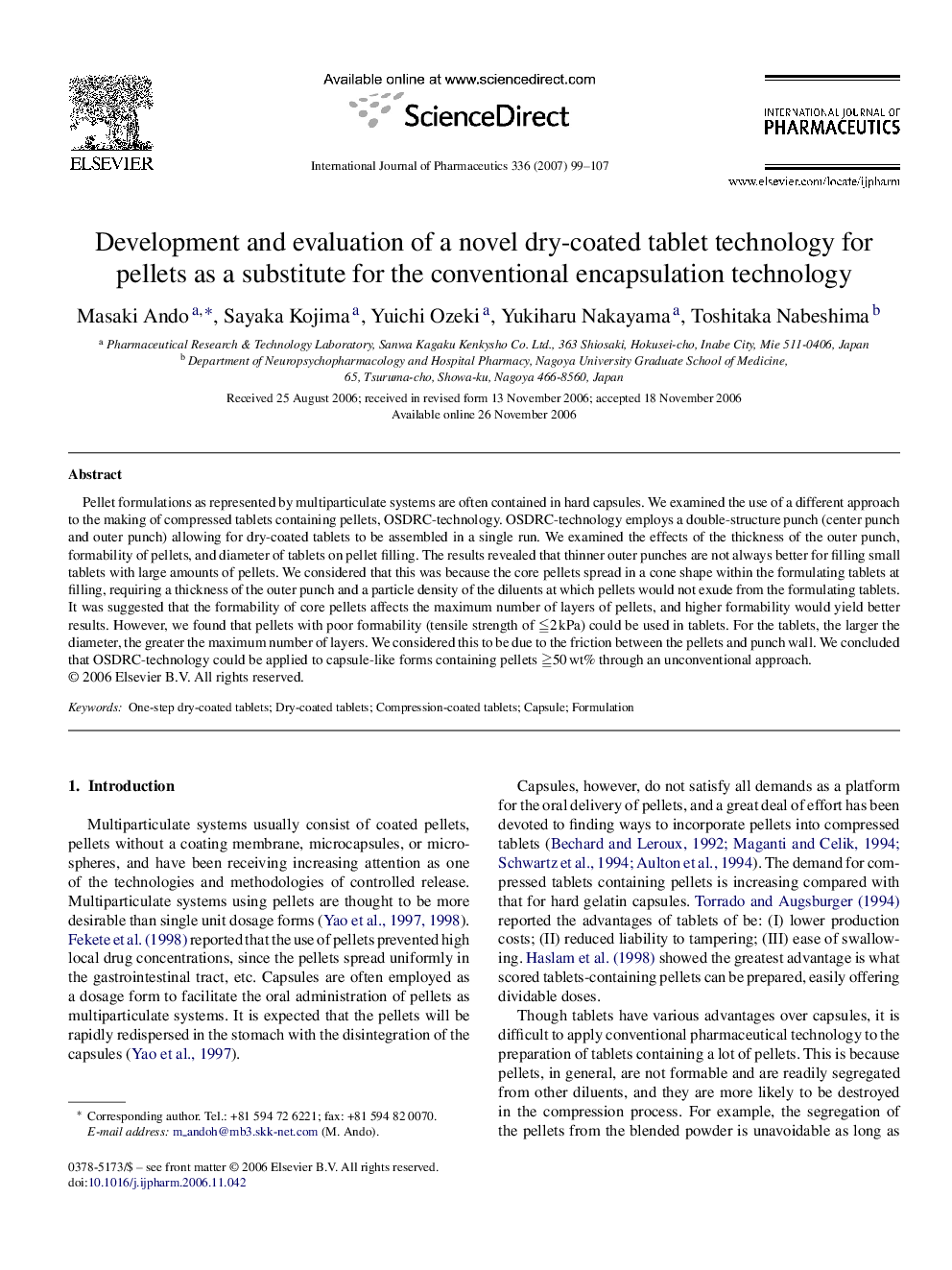| Article ID | Journal | Published Year | Pages | File Type |
|---|---|---|---|---|
| 2506230 | International Journal of Pharmaceutics | 2007 | 9 Pages |
Pellet formulations as represented by multiparticulate systems are often contained in hard capsules. We examined the use of a different approach to the making of compressed tablets containing pellets, OSDRC-technology. OSDRC-technology employs a double-structure punch (center punch and outer punch) allowing for dry-coated tablets to be assembled in a single run. We examined the effects of the thickness of the outer punch, formability of pellets, and diameter of tablets on pellet filling. The results revealed that thinner outer punches are not always better for filling small tablets with large amounts of pellets. We considered that this was because the core pellets spread in a cone shape within the formulating tablets at filling, requiring a thickness of the outer punch and a particle density of the diluents at which pellets would not exude from the formulating tablets. It was suggested that the formability of core pellets affects the maximum number of layers of pellets, and higher formability would yield better results. However, we found that pellets with poor formability (tensile strength of ≦2 kPa) could be used in tablets. For the tablets, the larger the diameter, the greater the maximum number of layers. We considered this to be due to the friction between the pellets and punch wall. We concluded that OSDRC-technology could be applied to capsule-like forms containing pellets ≧50 wt% through an unconventional approach.
